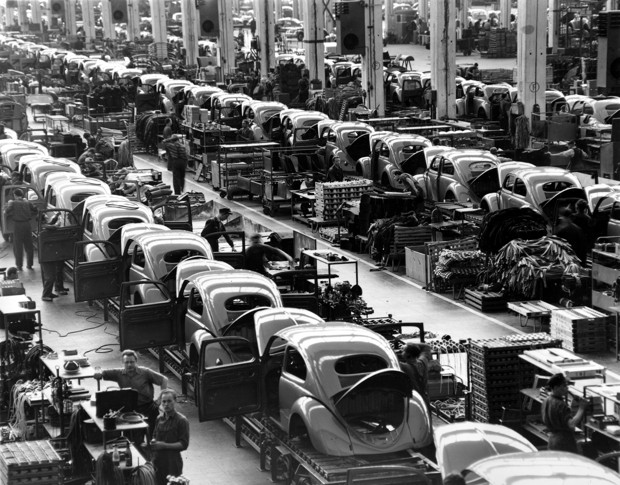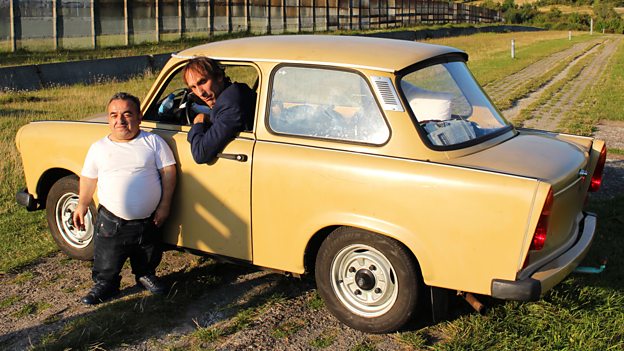RIP Volkswagen Beetle, the car that conquered the city.
On a late-1970s road trip across New York state, my brother and I counted so many Volkswagen Beetles that we got tired of punching each other. We began simply counting them silently, with the notion that, at some point, we’d see who’d counted the most and declare a Punch Bug Champion. I’d counted more than a thousand by the time we got to Bridgeport, Connecticut. Later, bored in the hotel, we sat by a rain-smeared window a few stories above the beat-up industrial city, counting Beetles until the sun set. Downtown Bridgeport in 1977 was a veritable sea of Bugs.
It’s hard to convey to a younger person just how omnipresent these vehicles once were, how they just filled your field of vision if you looked around anywhere in urban America during that era. Go stream some gritty ’70s urban action movies—Bullitt or The French Connection or anything else shot on location—and you’ll see them parked in the background of every car chase. The streets of American cities were once carpeted in Bugs. From 1968 to 1973, more than a million were sold every year. In 1972, when it passed the 15 million mark, the Bug overtook the Ford Model T as the best-selling vehicle on the planet.

The current model, of course, is a “New Beetle,” which is technically only a very loosely related sibling of the rear-engined original. It’s a regular front-wheel-drive Golf in a retro-inspired Bug body; when it debuted in 1997, purists dismissed this modernized remake as too big, too plush, and too pricey, compared to the bare-bones basic transportation that the People’s Car offered when it puttered forth from the ruins of postwar West Germany. (Yes, history buffs, VW has a Hitler problem. But, as Hitler problems go these days, it’s a relatively minor one.) Even after imports to the U.S. ceased in 1980, original air-cooled Bugs were still being made in Mexico until 2004, and the unkillable Vocho is still quite common on the streets of cities in Latin America. Here’s one in Puebla, Mexico.

While they are very different cars underneath the sheet metal, Beetles old and new shared something more important than powertrain layout: They both broadcast a sense of whimsy, a certain wide-eyed exuberance, and a general just-happy-to-be-here mien. They were joyful machines that celebrated the idea that getting around town was essentially a fun thing to do.
VW leaned in on the adorability idea—perhaps too hard—when it relaunched the Beetle. The new cars had that little dashboard vase, so you could put flowers in there. People stuck cartoon eyelashes on the headlights and filled the rear window shelf with stuffed animals. They came in bright silly sherbert-y colors. But it worked. Remember this haunting TV ad from 2003, where Sad Gen X Cubicle Man’s heart leaps when he sees a Beetle convertible? Somewhere, out on the streets, there’s color and light and happiness and freedom!
That doesn’t mean the Beetle is well and truly dead—carmakers are fond of reanimating their iconic brands periodically. But if the name re-emerges on some future VW, as many have speculated, it will probably be attached to some all-electric mobility pod, possibly shared. Maybe it’ll have big happy eyes and a vase for a dashboard flower, to remind the children of former Bug owners that driving your own car around was once a joyful thing.





Hitler did something right.
ein volk
ein reich
ein beetle
The VW Beetle was, in its original form, affordable. Around $1800 new in the late 60’s. It was Air cooled so no radiator or water pump to go bad on you and a manual transmission was mandatory but it was a bit underpowered ( less than 50 hp) so long grades kept you in the slow lane but it could do 65-70 mph on level ground no problem.
Competition.
Middle Class poverty will bring it back.
At the very least, Beetles beat the dog shit out of Trabants.
[img [/img]
[/img]
My very first car growing up was a black, 1961 Beetle. It even had a fabric sunroof! Froze my ass off in the winter, and the thing would maybe do 60mph – going downhill- but a good first car for a kid.